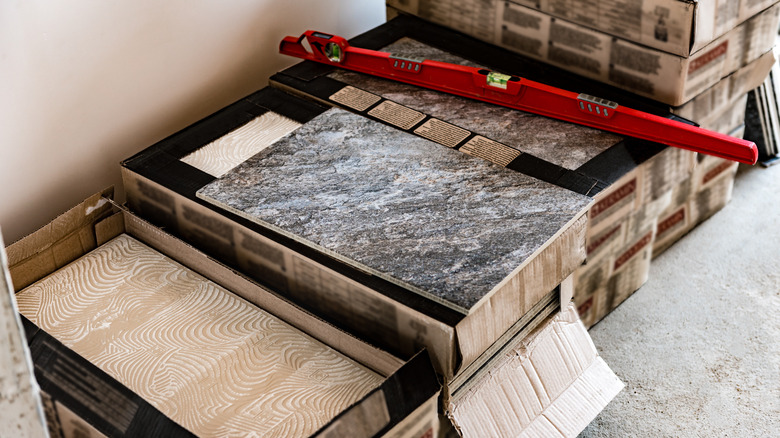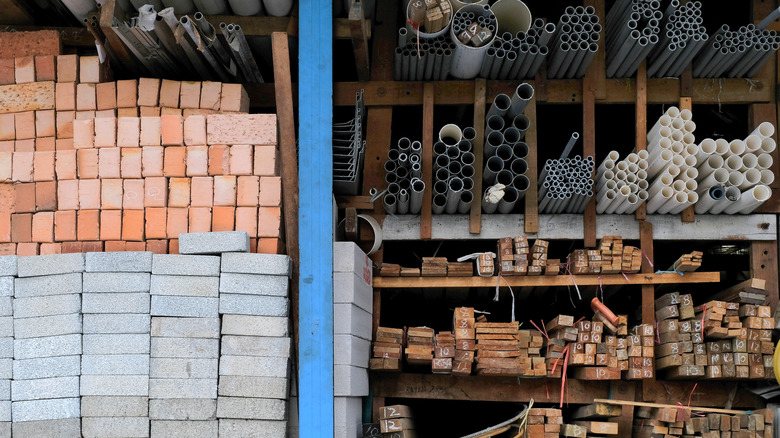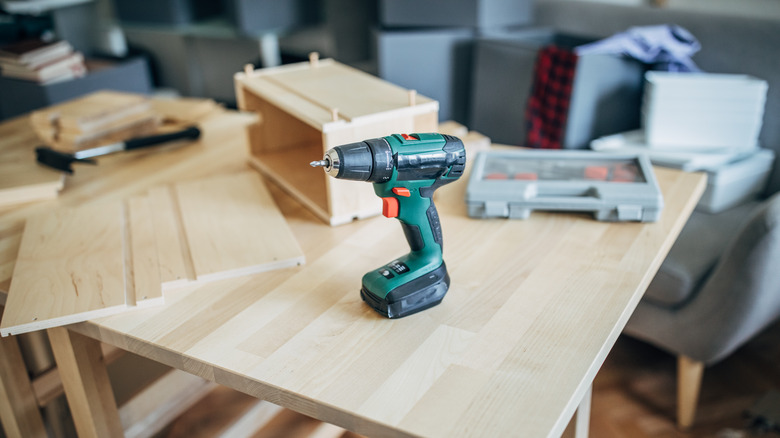No Demo Reno Proves Why You Should Hold On To Extra Materials During A Home Reno
"No Demo Reno" is all about being smart with your money and energy when it comes to renovations. When you cut costs and keep expenses slim, whatever you recoup can help cover any unexpected expenses that may arise later, adding to the safety of the built-in buffer that you should already have in the budget. Another way to be wise during a reno is to hold on to extra construction materials because you never know when they might come in handy.
In Season 2, Episode 6 of "No Demo Reno," the team was left with a big hole in the floor after removing a kitchen island. They needed to fill it, but new flooring wasn't part of the plan. One way to get around this would have been to replace the entire flooring, which would have been a huge setback in more ways than one. Luckily, the homeowner had extra tiles, so those were able to be used. "If she did not have about four or five boxes of that flooring saved, we wouldn't be able to make this happen," said Victor Manta (via Max), the general contractor. "Always keep your extra flooring," replied Jenn Todryk.
Extra construction materials might come in handy later
Holding on to extra materials during a home renovation is wise because it ensures you're equipped for any unforeseen issues that may come up. Mistakes and miscalculations happen, so having that extra box of tiles or can of paint will allow you to move quickly. Extra materials also help maintain a cohesive aesthetic. If repairs or replacements are needed down the line, the specific style you bought may no longer be available, but those extra materials will save the day and you'll be able to keep the design consistent.
All you need to do is factor in a little excess into your material budget. You'll pay higher costs upfront but gain peace of mind as you move forward with the renovation. Some materials you can get a surplus of are wood pieces, building blocks, bags of concrete and cement, roofing shingles, paint, sealant, wallpaper, hardware, tiles, carpet, and other flooring materials.
Storage and upcycling ideas
Make sure to store extra materials properly so they are still usable when you need them. Tiles and boxed materials should remain in their original packaging, lumber should be aired out and kept away from water, and paint cans should be airtight. If the leftover materials are unused at the end of the day, there are many creative ways to upcycle them so you get unique, personalized pieces for your home while reducing waste. An extra door or cabinet can be turned into the perfect DIY coffee table while leftover tiles or paint can be used to create a unique backsplash or accent wall. They can also make interesting mosaic tabletops.
Wood has endless possibilities. You can make something to use indoors, like a bookshelf or an under-cabinet spice storage rack, or something for your garden, like bird feeders or garden beds. If you know you won't need them in the future and just want to get rid of your extra construction materials, try selling or donating them to other people or stores like Habitat for Humanity.


